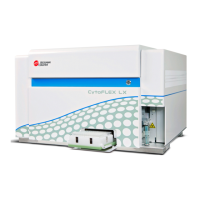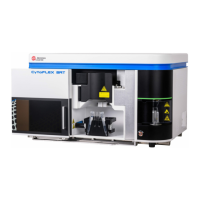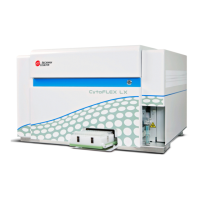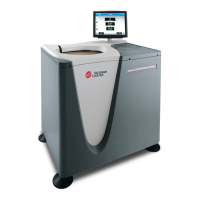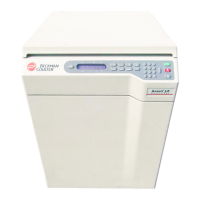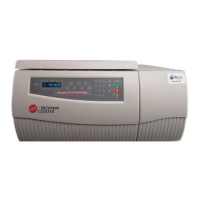PN 177196BB
8-14
SYSTEM DIAGNOSTICS AND MAINTENANCE
RECOGNIZING NORMAL INSTRUMENT OPERATION - CYCLE DESCRIPTION
Making the Hgb Dilution
1. The vertical traverse assembly moves the probe
up, out of the dilution in the bath.
2. While the probe is still inside the DIL 1/HGB
bath, an additional 0.4 mL of Diluent is added
to the bath through the reagent port.
3. 0.4 mL of Hgb Lyse is added to the bath, making
a final dilution of 1:250.
The Hgb Lyse reagent rapidly destroys the red
blood cells and converts a substantial
proportion of the hemoglobin to a stable
pigment so a hemoglobin value can be
determined.
4. Mixing bubbles enter the bath to ensure a
uniform dilution.
5. This dilution is used to measure the
hemoglobin.
6. The sampling probe is returned over the RINSE
bath. The piercing needle is rinsed, drop
retraction takes place and both the probe and
the needle are air dried.
Making the RBC/Plt Dilution
1. The horizontal traverse assembly moves the
sampling probe over the RBC bath.
2. The vertical traverse assembly moves the probe
downward into the bath. The tip of the probe is
positioned so that a tangential flow of reagent
can occur.
3. 42.5 µL of the 1:170 dilution obtained from the
DIL 1/HGB bath and 2.0 mL of Diluent are
simultaneously dispensed into the RBC bath.
4. An additional 0.5 mL of Diluent is dispensed
through the sampling probe at the end of the
second dilution, making a final dilution of
1:10,000.
5. Mixing bubbles enter the bath to ensure a
uniform dilution.
6. This dilution is used to:
a. Count the RBCs.
b. Develop an RBC histogram.
c. Develop a PLT histogram.
DIL 1
HGB
DIFF RBC BASO
WBC
RINSE
DIL 1
HGB
DIFF RBC BASO
WBC
RINSE
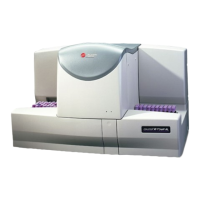
